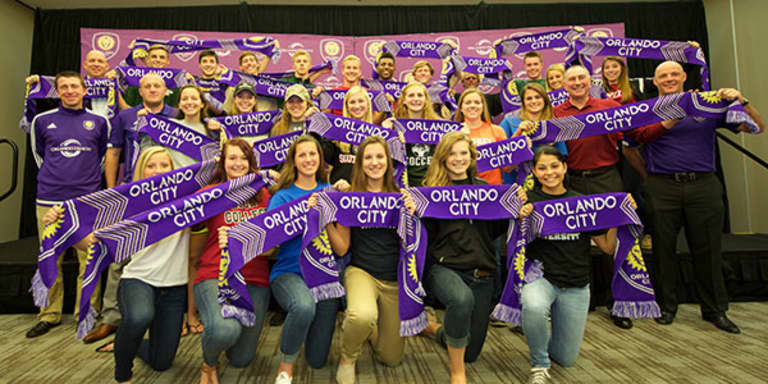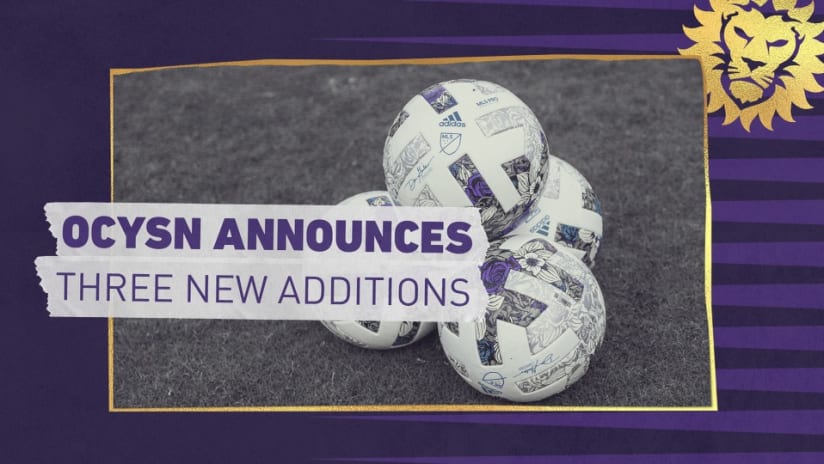All across the world, professional soccer clubs employ youth academies to hopefully develop players at a high level.
Starting at young ages, players gradually climb up each age group with the hope of breaking into the senior team. Although academies have been in place in various countries for an extended period of time, American professional soccer clubs have only recently begun investing in youth systems.

In 2012, Orlando City SC took a controlling interest in Florida Soccer Alliance (FSA), a youth soccer club in Sanford. In doing so, Orlando City acquired the club and its facility, Seminole Soccer Complex, becoming Orlando City Youth Soccer – the official youth academy for the pro team.
While most MLS clubs have an academy with the U-14 to U-18 age groups, Orlando City has a full youth system from U-5 to U-18 which includes both an academy and a recreational program for boys and girls.
Orlando City’s system begins at four years old with the
Little Lions program
. In these beginning stages, the players are taught how to play with others on the field and begin learning the technical part of the game such as dribbling, passing, and shooting.
At eight years old, players can then choose a path for their future. They can either try out for the
academy program
or the
recreation program
. The academy is a more competitive program – designed for more advanced players. On the other hand, the recreational side serves as an additional resource for beginner players.
However, both programs are interchangeable as players progress and grow older, providing the opportunity for recreational members to make the transition to the academy. As a result, both paths will guarantee players top coaching of the “four pillars”.
OCYS’ “four pillars” of the game are technical, tactical, mental, and physical. The technical aspects of the game include dribbling, passing, and shooting, focusing on the correct fundamentals for 90 percent of their development during the U-5-U-8 age groups.
OCYS Executive Director Steve Rammel equates the early technical training to handwriting saying, “If I ask you to write something quickly, you’re going to revert to the way you wrote when you first learned.” As the player enters their teen years, they will begin to learn the tactical side of the game. Throughout their development, players are also taught the mental and physical aspects of the game.
Each team will also employ the same style favored by Adrian Heath with the professional side. Using the familiar 4-2-3-1 formation, players are taught to play the ball from the back rather than launching it forward. Even goalkeepers are taught to skillfully use their feet instead of clearing the ball with booming kicks. It’s a style that has been very successful at every level and has garnered praise from opposing sides.

A significant part of OCYS’ structure is the
U.S. Soccer Development Academy (USSDA)
. Founded by U.S. Soccer in 2007, the USSDA is the highest level of play for boys in the United States. The league was created to improve youth development in the country. USSDA includes three age divisions; U-13/14, U-15/16, and U-17/18. Members of the academy league are required to follow certain criteria such as maintaining a 10-month season. In 2008, MLS made membership in USSDA mandatory for its clubs. While most MLS clubs restrict themselves to just those three required age groups, Orlando City continues to show its dedication to youth development by maintaining a full academy.
The OCYS academy is based on four tiers which narrows as the kids grow older. The purple team is the highest level, followed by white, gold, and black. While there are many teams representing each color at the younger ages, there are only two purple teams by the time they reach 17 years of age. There are several factors in this narrowing of the pyramid which include players preferring to play for fun rather than competitive and picking up other hobby’s which become more important than soccer. No matter what they decide, the club still provides them with top level coaching to continue their development.
On the girls side, the club is also a member of the
Elite Clubs National League (ECNL)
. Similar to the USSDA, the ECNL is the top level of play in the United States for girls. Although there is no senior women’s team currently for Orlando City, ECNL players are provided with a valuable platform to achieve a college scholarship, potentially a career in professional soccer, and maybe, one day, the opportunity to play for the U.S. Women’s National Team.
While the game has made great strides over the past 15 years, Orlando City is taking an active part in working to grow the soccer culture in Central Florida. Part of that is helping parents of children in OCYS understand the purpose of development.
“While results in tournaments are a result of the work put in, our main focus is about developing players,” added Rammel. “Sometimes it’s difficult for parents to understand why the result of a match isn’t always the most important takeaway from a game, but that’s where we come in as coaches and directors. It’s our job to help educate not only the players, but also parents who are new to soccer.”
Despite the fact that development is still the key for OCYS, the results have been strong. Earlier this month in the FYSA Region Cup, a statewide tournament,
15 OCYS teams advanced into the next round
. That’s an astounding number considering that most clubs hope to have two or three teams advance, showcasing the dedication from OCYS coaches, parents and players on a weekly basis.
Ultimately, the overall goal for OCYS is to send 100 percent of their players to the next level. While that may seem to be a lofty goal, the club has made great strides toward that number.
Last year, 41 OCYS boys and girls signed letters of intent to play college soccer. Earlier this month,
32 players signed with colleges
, a number that is likely to increase beyond last year’s 41 during the spring signing period.

“Not every player will play in MLS,” said Boys Academy Director Paul Shaw. “But we can help them go to college.”
At the end of the day, OCYS is about developing kids on and off the field. OCYS’ vision is to teach kids about life, a love of the game, and helping them to grow as players. Whether they want to play professionally, play for fun, or use it as a tool to attend college.
As Rammel puts it, “Everything we do is about the kid.”






